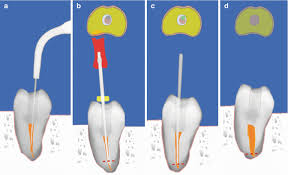Depilatory effect of drugs mechanism of freckles.. Loss and reduce the number of the active cells melanomas. Inhibition of enzyme activity Terozaniz
Depilatory effect of drugs mechanism of freckles
Moles
All humans have freckles. This is especially true for fair-skinned people who have been exposed to the sun either actively or passively. Although the vast majority of freckles are benign and throughout life will not turn into skin cancer, it is necessary that we periodically review them with the dermatologist, since they have a course and may have changes. A large proportion of skin cancers appear in areas of skin that appear healthy, with no previous injuries or freckles.
However, some melanomas (an aggressive skin cancer that is particularly common in young people) can originate from an old mole. Freckles (melanocytic nevi) are composed of pigmented cells (melanocytes) which are arranged like cobblestones in the surface of the skin. These melanocytes undergo changes and reproduce throughout life, either through exposure to sunlight or spontaneously. Some of these changes (dysplasia) can increase the risk of the malignant cells degenerating into melanoma.
For this reason, it is vital that we take care of our freckles and be vigilant of the new ones that we appear and the changes that may occur in the old one. The visual signs that should alarm us are the black coloration, the rapid growth of the freckle or its irregularity in shape and color. However, these signs normally appear at a relatively advanced stage of the tumour. Ideally, more incipient changes should be detected to avoid future risks by performing early treatment. The tool that allows the early detection of microscopic changes in the structure of freckles and to obtain a very early diagnosis of skin cancer is Digital Dermoscopy. Through a digitized freckle scanner (Fotofinder Bodystudio) we are able to map all of a person's pigmented lesions and detect minute changes indicating a risk of degenerating into cancer. In addition, the scanner makes it easier for us to take microscopic photos of each of the freckles and store them so that in the next visit with the dermatologist we can compare them and observe their minor variations.
Digital Body Dermoscopy, a pioneering technique that is totally safe for the patient, has marked a before and after in the early diagnosis of skin cancer and makes possible the early detection and elimination of any freckles that may be a risk of future degeneration to skin cancer. It also allows us to diagnose an already established skin cancer, to orient ourselves on its degree of evolution and to propose the best possible treatment, whether or not surgery.
For all these reasons, it is best that, at least once a year, we visit the dermatologist to check with Dermoscopie all the freckles we have and do body mapping for the prevention of future risks.
What hormone controls melanin?
α-melanocyte-stimulating hormone
The production of melanin is regulated by α-melanocyte-stimulating hormone (α-MSH), which is produced from proopiomelanocortin (POMC). Keratinocytes release POMC along with lower levels of α-MSH and ACTH.
Is drug-induced vitiligo permanent?
Drug-induced vitiligo usually resolves when the offending drug is discontinued, but the time it takes to happen can vary greatly. Vitiligo is difficult to treat.
How do you treat drug-induced pigmentation?
Treatment / Management
In these cases, decreasing the intake of a drug can dramatically reduce the dyschromia present. Additionally, specific drug-induced pigmentation is avoidable by limiting sun exposure. These drugs include antimalarials, psychotropic, amiodarone, and tetracyclines.
Does skin pigmentation grow back?
Pigmentation loss as a result of skin damage: If you've had a skin infection, blisters, burns, or other trauma to your skin, you may have a loss of pigmentation in the affected area. The good news with this type of pigment loss is that it's frequently not permanent, but it may take a long time to re-pigment.
How long does it take to reverse hyperpigmentation?
For post-inflammatory hyperpigmentation (PIH), without any treatment at all it can take anywhere from three months to two years for the discoloration to fade, depending on how dark the patches are, and even then it may not disappear completely.
Which drug promotes the Melanogenesis?
Cilostazol promotes production of melanin by activating the microphthalmia-associated transcription factor (MITF)
What drugs cause skin discoloration?
The main drugs implicated in causing skin pigmentation are nonsteroidal anti-inflammatory drugs, antimalarials, amiodarone, cytotoxic drugs, tetracyclines, heavy metals and psychotropic drugs.
What triggers hypopigmentation?
What causes hypopigmentation? Skin loses its color when the body cannot produce enough melanin. Causes include genetic factors, trauma, and inflammation. Blisters, burns, dermatitis, and fungal infections are all possible factors.
Can you reverse hypopigmentation?
Hypopigmentation may improve or go away on its own. If a skin condition causes hypopigmentation, medications may help restore color to your skin. If you have a genetic condition, hypopigmentation may be permanent. Be sure to use sunscreen on your light patches of skin.
Can hypopigmentation go away?
Post inflammatory hypopigmentation is a temporary problem. As long as the underlying skin problem can be controlled and no new bumps develop, the lighter areas will slowly go away. It is important to realize that this is not a permanent lightening of the skin but it resolves slowly.
What drugs affect melanin?
Pigmentation may be induced by a wide variety of drugs; the main ones implicated include non-steroidal anti-inflammatory drugs (NSAIDs), phenytoin, antimalarials, amiodarone, antipsychotic drugs, cytotoxic drugs, tetracyclines, and heavy metals.
How long does drug-induced pigmentation last?
This adverse effect normally resolves within 1-4 months of drug discontinuation. Cancer chemotherapeutic agents can cause various adverse cutaneous effects, including photosensitivity and diffuse or localized hyperpigmentation of the skin, nails, and mucous membranes.
Can drug-induced pigmentation be reversed?
Medical Care. The most important factor in the management of drug-induced dyspigmentation involves the identification and discontinuation of the offending drug. Most mucocutaneous pigmentation is reversible and spontaneously resolves with avoidance of the inciting drug.






